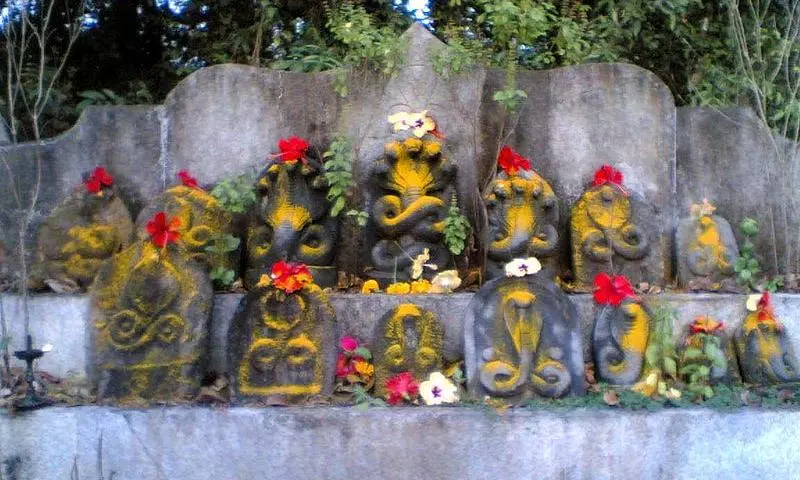Nagaradhane: An age-old Practice of the Locals of Tulunadu, Karnataka

Nagaradhane: An age-old Practice of the Locals of Tulunadu (Photo by Wikipedia)
Hyderabad: A tradition of serpent worship has been thriving over the ages in the Tulunadu region of Karnataka. This area is known for its strong cultural legacy and has various traditions that involve worshiping the elements of nature.
Nagaradhane is an old practice of this place where devotees revere the serpent deity. This tradition is deeply rooted in the coastal regions of Karnataka. It is not limited to the coastal regions only but this region has a specific reverence for the six-faced Subrahmanya.
Naga is considered the main deity in matriarchal communities like the Bunt Community of the Tulunadu. The devotees pay their respects at the ancestral serpent grove of their clan called Moola Thana.
These groves are considered sacred and significant as the devotees believe they connect the communities to their ancestral roots and the natural world.
The rituals are mainly conducted at the family's current serpent grove or sacred grove also called nagabana. These nagabanas are considered important for the ecosystem and the culture of Tulunadu as they provide a vital habitat for a wide range of flora and fauna.
Research about the sacred groves conducted by Prabhakar Achar, Vidya Nayak, and their team, specifies the biodiversity of these groves. The research documented 294 plant species, 22 mammal species, 55 bird species, and 18 types of reptiles in these groves.
These groves cover acres of land but due to encroachment, they are getting diminished. This has led to a significant loss in biodiversity.
Thukaram Poojary, a retired history professor, and the founder of Rani Abbaka Tulu Adhyayana Kendra and Tulu Baduku Museum in Bantwal stated these forests used to be home to serpents and other wildlife, and are now getting replaced by urban development and agricultural lands. This change has disturbed the natural balance and reduced the habitats available for these creatures.
He said, "In ancient times, humans revered the presence of serpents, with which they co-existed. This was true to ancient Tulunadu as well. But today, people consider reptiles a threat."
He further explained that serpents usually reside in a cool temperature but nowadays the concrete structures of cement covered with tin sheets have replaced the natural canopy in nagabanas.
Anthills are also found in the nagabanas and they are recognized as an excellent source of groundwater, with termites reaching up to 100 feet of depths underground. These antills acted as groundwater recharging chambers during the rainy season. In the past, anthills were found in the nagabanas which have now been replaced into concrete jungles. This prevents the water from percolating, Thukaram explained further.
Furthermore, it is believed among the people of Tulunadu, that construction should not be done on nagabeedhi, which is a place where serpent movements have been found or are known to have been found in the past.
Although it is challenging to trace the exact origins of the beginning of serpent worshipping, the rituals practiced by tribal communities suggest that they believe the deity was one of the ancient gods worshipped in the region.
The tribal communities have preserved the sacred groves in their original form in many regions.
In Tulunadu, nagaradhane is not just a ritualistic practice, it is the expression of the region's respect for nature and its elements. The sacred groves and the traditions which are connected with the serpent worshipping, play a vital role in the preservation of the local biodiversity and its cultural heritage. While urbanization and environmental changes endanger such practices, it is important to protect these areas to protect the ecological balance and ancient traditions of Tulunadu.
( Source : Deccan Chronicle )
Next Story

